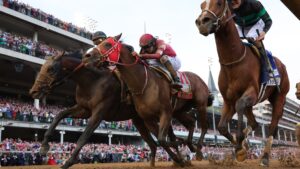The Future of Horse Racing: Growth, Challenges, and New Opportunities
Horse racing has long been a staple of American sports culture. Yet, as we bid farewell to the historic Freehold Raceway—the oldest horse racetrack in America that will close its doors after its last race weekend in 2024—we find ourselves at a crucial juncture for the industry. Co-owned by Penn Entertainment, Freehold Raceway struggled amidst declining attendance and revenue, unable to pivot towards new revenue streams like casino operations. But while this closure marks an end, it could very well herald a new beginning for horse racing.
A Broader Perspective on Resurgence
Despite the challenges facing Freehold and similar racetracks, the broader outlook for horse racing in the United States is anything but bleak. Industry insiders and investors are optimistic about a potential resurgence, especially given the rapid growth of legalized online sports gambling and the introduction of innovative practices within the sport. The American Horse Council reported that horse racing contributed over $36 billion to the U.S. economy in 2023, supporting nearly half a million jobs. This indicates that the industry has both resilience and potential for growth—elements that could be harnessed for future success.
Expanding Betting Opportunities
The key to revitalizing horse racing lies largely in its gambling revenue. The total amount wagered on horse races reached a record $12 billion in 2022, and this trend continues to grow. States are seeing significant benefits: Resorts World New York City, for example, is obligated to funnel 12% of its net wins to the New York Racing Authority, totaling about $120 million annually. This kind of data showcases the profound connections between gambling and racing outcomes, drawing a more engaged audience.
At Extreme Investor Network, we advocate for innovative betting models that attract younger demographics. Companies like FanDuel are leading the way by partnering with marquee events like the Kentucky Derby, facilitating record-setting bet volumes that rival the Super Bowl. Such partnerships not only bring cash flow but also help build a new generation of fans who interface with horse racing in exciting ways.
The Crown Jewel of Racing
The Kentucky Derby is a prime example of how innovation and tradition can coexist. Churchill Downs, the parent company behind this iconic race, has reported a significant uptick in adjusted EBITDA during Derby Week, assisted by high-profile sponsorships that align with the event’s prestige. The Derby exemplifies an operational strategy that other racing events might replicate. As CEO Bill Carstanjen stated, it is a model for the future.
Meanwhile, horse racing is also being marketed as an “Instagram moment,” capturing the younger audience’s attention and experiencing a renaissance through social media visibility. Hall of Fame trainer Bob Baffert emphasized this allure, highlighting that it’s not just about the race—it’s about the entire cultural event that accompanies it.
Challenges Ahead
Even with the optimism, horse racing faces challenges. The number of horses, owners, and trainers in the U.S. has declined, and interest in everyday races has waned, creating a "niche market" for the sport. Industry veterans like Baffert suggest that big purse events could reinvigorate interest, but this requires creative solutions and significant investment.
The perceived lack of regulatory oversight adds another layer of complexity. Organizations like the Horseracing Integrity and Safety Authority (HISA) aim to standardize practices across the board, building trust with fans and investors alike. As the U.S. racing fatality rate falls in line with international standards, we at Extreme Investor Network believe this progress is crucial for attracting new investment.
Revamping Facilities for Modern Audiences
A parallel concern lies in the state of racetrack facilities themselves, which often suffer from outdated infrastructure that deters attendance. Major renovations are underway at prominent tracks like Churchill Downs and Belmont Park, but more is needed. Innovations such as mobile apps and enhanced fan experiences are essential for adapting to the modern sports landscape.
Dennis Drazin of Monmouth Park emphasizes the need for racetracks to integrate varied revenue streams—entertainment, gaming, and exceptional customer experience—to create sustainable operations. Partnerships with broadcasters like Fox Sports have amplified visibility, contributing to substantial increases in online wagers.
Capitalizing on Investment Opportunities
As exciting investment opportunities unfold, Wall Street’s interest in horse racing is rising. Figures like Danny Moses of "The Big Short" fame are pioneering new investment strategies to capitalize on the potential for increased payouts and higher quality horses. Companies like Starlight Racing are also establishing innovative models to engage investors while offering a tangible connection to the sport.
Conclusion: A New Age for Horse Racing
While the closure of Freehold Raceway marks the end of an era, it also opens the door for innovation, investment, and growth in the horse racing industry. Despite the challenges it faces, the framework for a successful resurgence is already taking shape.
At Extreme Investor Network, we are keen on monitoring these developments—highlighting new investment avenues, potential legislative changes, and innovations that might redefine the landscape of horse racing. The future holds promise; with the right strategies, we may soon witness a revitalized passion for one of America’s oldest sports.
Stay tuned as we continue to explore these developments and offer insights into how you can capitalize on emerging opportunities in this dynamic industry.

